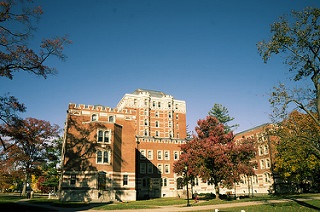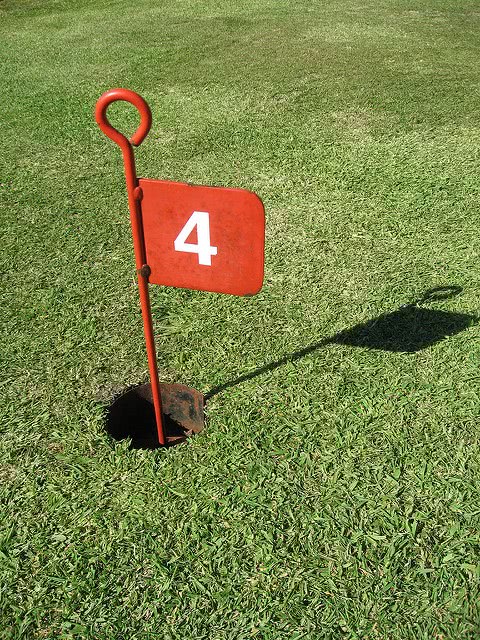Whenever students are asked about their college preferences, one of the things students consider is the size of the school. The majority of college match tools, including College Raptor, ask about preferred college size. There are small, medium, and large size colleges, but how do students know what the right size is for them? Each size has its own advantages that students should consider when building their college list.
Why is Considering College Size Important?
The size of the college you’re attending can impact your opportunities and experience. A student attending a small college in a rural area will have a vastly different experience than one attending a large university in a big city. There’s nothing bad about going to a “small” or “large” school – it’s just important to consider your own wants and needs when it comes to your education.
Some factors that could influence the size of the campus and school you want include:
- your intended major
- club availability
- location
- personality
- comfort level
- cultural preferences
- and other interests.
For example, if you’re interested in majoring in Forestry, you might benefit from a small college in a rural area with its own forest. But if you’re interested in Pre-Med, a large university in a big city may be a better fit for you.
You’ll also want to consider how you do in large crowds or classes, and how that impacts your academic ability and overall comfort. If you go to a large school and you’re overwhelmed by the crowds, you can be unhappy with your experience. If you go to a small school, you might be disappointed with the sporting program or club options.
There’s no right answer here, but it’s important to consider your own wants and needs when it comes to college – and this goes beyond the major.
College Size by Numbers
Colleges can have anywhere from a few hundred students to tens of thousands of students. Some even have over 100,000 on campus and online. The Carnegie Classification breaks down 4-year higher institutions by very small, small, medium and large. Here’s a breakdown of college sizes by the numbers:
Small Size Colleges
“Small” colleges usually have fewer than 3,000 students. Many small colleges are private, including CalTech, Reed College (OR), and Vassar College (NY). While many public institutions are medium to large size, there are some that are considered small, including The Evergreen State College (WA), and Hillsdale College.
Check out the Best Small Colleges in the US.
Medium Size Colleges
“Medium” colleges have student populations between 3,000 and 9,999 students.
There is a good mix of public and private colleges that fall in the medium-size category. Some examples of medium colleges include Dartmouth College, Rice University, and the University of Richmond.
See the Best Mid-Sized Colleges in the US.
Large Size Colleges
“Large” colleges have over 10,000 students. Many of the large colleges are public institutions, but there are some large private colleges as well. Examples of large colleges include most of the University of California campuses, USC, Harvard, and Ohio State.
Check out the Best Large Colleges in the US.
Differences in College Size
Some of the selling points for small colleges include small class sizes, personal relationships with professors, and close-knit communities. Large colleges, on the other hand, usually offer hundreds of student organizations and active student communities.
Here’s a look at what you can expect at small vs. medium vs. large colleges, and how it may be possible to find what you’re looking for at any size college.
Class Size
Small classes are not only found at small colleges. While many medium and large colleges have large lecture classes for introductory courses, they also offer small classes.
Some colleges will offer, and sometimes require, a “discussion” class in conjunction with a large lecture course where students will get together with classmates to discuss the lectures and course material. In addition, as students move to upper-level courses, the classes tend to get smaller.
Small classes are great for students who enjoy participating in class. Small classes also make it hard for students to stay anonymous because these small classes sometimes require students to speak up and participate. Larger classes, sometimes referred to as lecture classes, usually allow students to sit back and listen. Each class and professor has different ways of determining grades, but it is usually safe to assume smaller classes tend to use participation and attendance, while lecture classes will not.
Individualized Academic Support
Many admissions officers from small colleges share similar stories about their professors. Some of these stories include professors noticing when students miss class and professors having lunch with their students in the dining hall.
It’s easier for professors at the small colleges to do these things because their population is smaller. However, this is possible at bigger colleges as well. Students might have to seek out the professors at first by attending office hours or speaking up in class. But, if a relationship with your professor is important, it can happen at almost any campus if you put a little work into it.
Campus Communities
Smaller colleges make it easier for camaraderie with much of the student population. With a smaller student population, it is easier for students to get to know many of the other students on campus.
Although larger colleges make it almost impossible to know everyone on campus, it is possible to find a small community within a large college. Academic programs, student organizations, or residential communities can serve as a close-knit community for students at a bigger college.
Student Activities
Bigger colleges are usually able to offer hundreds of student organizations covering almost every interest you can imagine. These organizations are usually very specific to the interest. For example, instead of having one organization for Business majors, there might be a separate organization for students interested in Business Administration, Marketing, or Accounting, as well as a Business fraternity.
With so many options, students might find it hard to choose the right organizations or they may get over-involved in activities. Smaller colleges, on the other hand, usually have fewer student organization options. However, the organizations at smaller colleges are usually more general, making it easier to chose which organizations to join.
In addition, students at smaller colleges may not find an organization they want but can step up and create an organization.
Choosing the Right Size College: Small, Medium, or Large?
Colleges all have something great to offer, no matter the size of the student population. Since the different college sizes can offer the same opportunities, just in a different way, how should you choose the types of colleges to consider?
A lot of it will come down to your personality and how you will feel most comfortable. Here’s a quick review that can help you make your decision.
Should You Attend a Small College?
You should consider attending a small college if you:
- want smaller classes
- 1:1 assistance from the professor
- and a more tight knit campus and community.
This can also be a great choice if you don’t like large crowds. However, they tend to be lacking when it comes to academic resources, research opportunities, sports, and club availability.
Should You Attend a Large College?
A large college can be perfect for a student who loves options. There will be more choices when it comes to classes and clubs, and advanced research and resources for study. The downsides are that it can be easy to get lost in the mix. You might find that professors don’t have time to help, or that staff are overwhelmed with tasks if you need assistance outside of the classroom.
Should You Attend a Medium College?
Medium sized colleges tend to offer the benefits of both small and large colleges. If you’re not set on attending a small school or a large university, a medium college is an excellent option as they tend to have advanced resources, research opportunities, small classes, large lectures, traditions, clubs, and more.
If you’re not quite sure which size college would be best for you, it’s time to schedule some campus visits! Schedule a trip to small, medium, and large colleges to see what the experience is like. You could be surprised by your trip, too! Either way, students should keep in mind their goals, needs, and wants when it comes to deciding which size college would be best for their college and learning experience.
Do you want to explore small, medium, or large colleges that fit the other things you’re looking for in a school? College Raptor makes it easy with College Match. Sign up today to start exploring!







Having worked on small campuses throughout my career, I’ve always felt like three options–small, medium, large–are too few to be helpful. There are significant differences between a school with 1000 students and one with 4000, and I am sure the same is true within the other categories. I wonder if, at the least, we ought to talk about tiny, small, medium, medium large, large and huge.